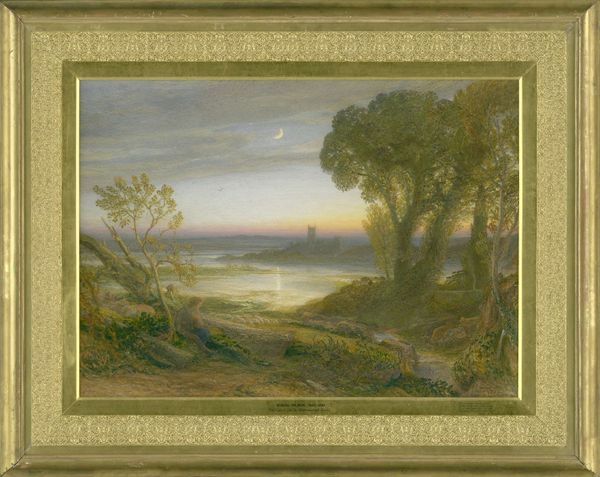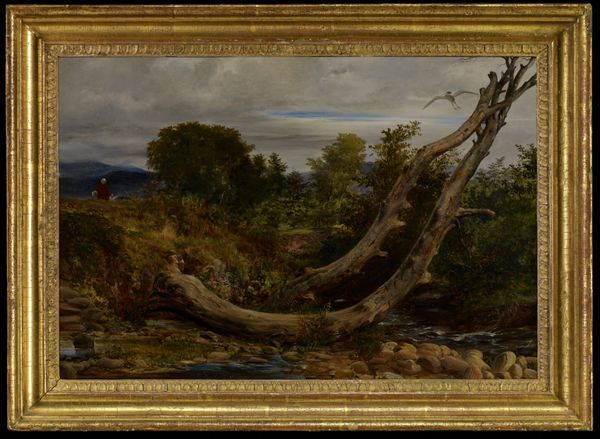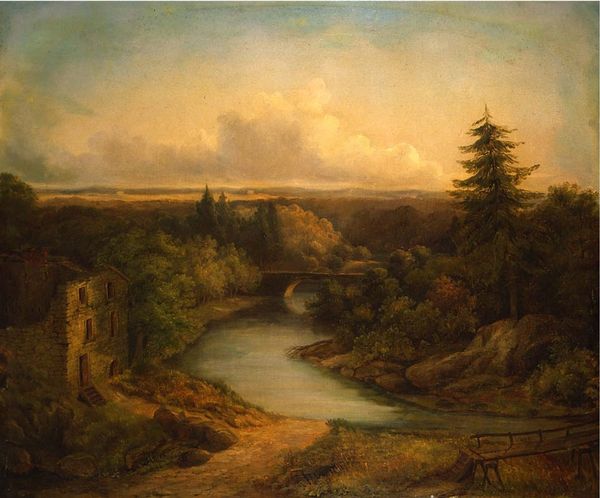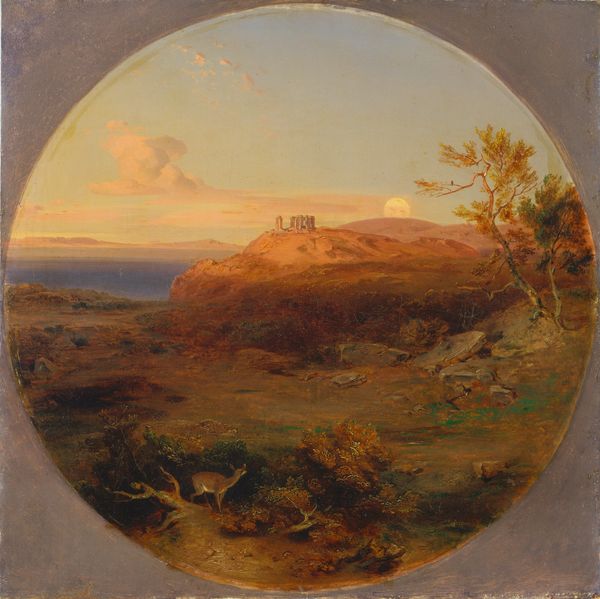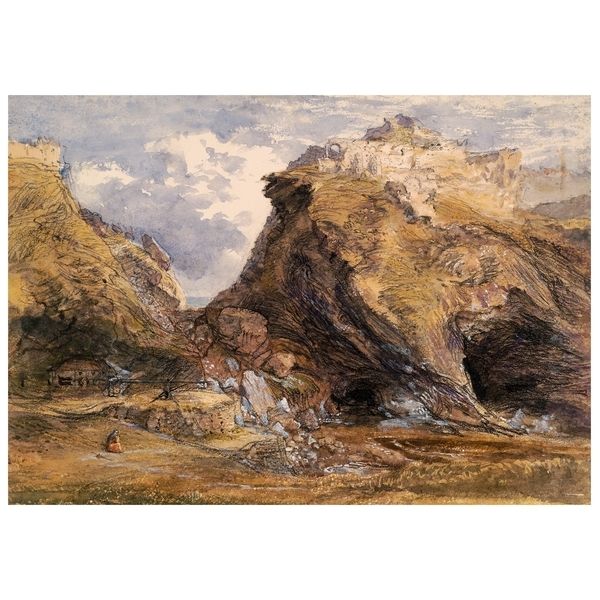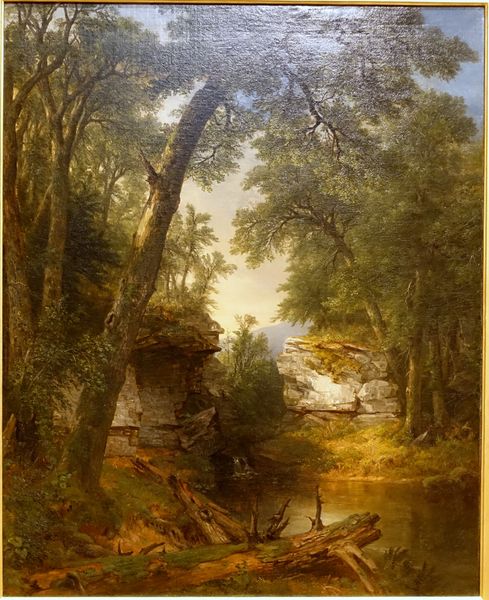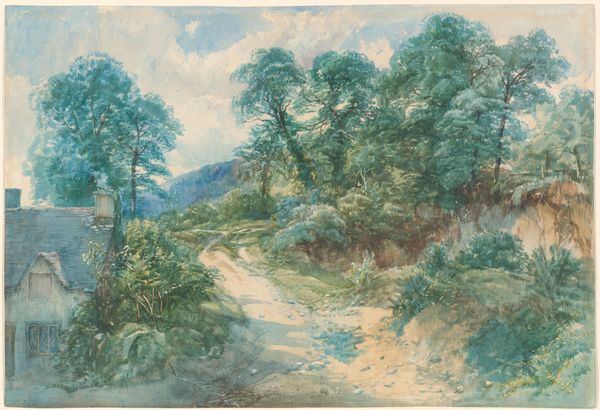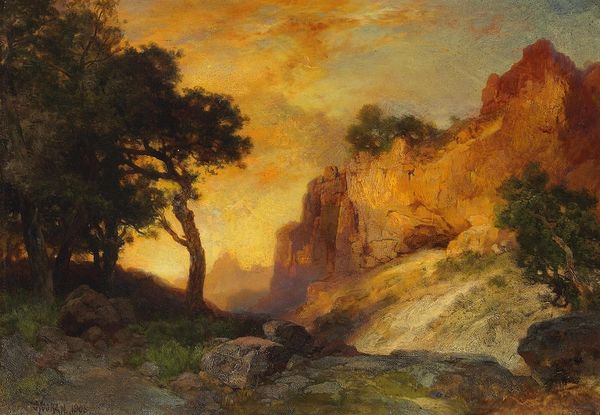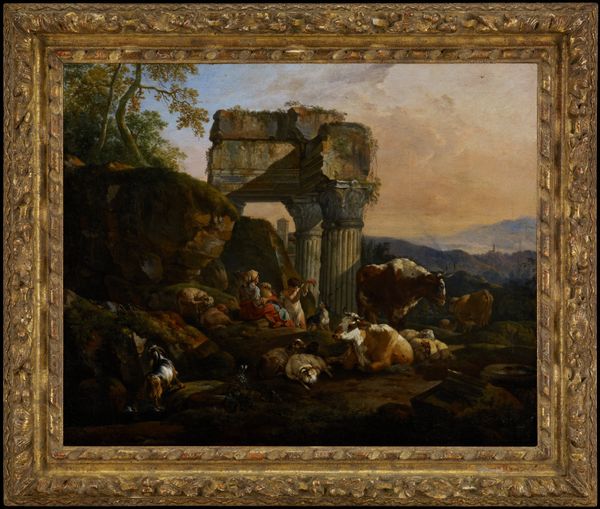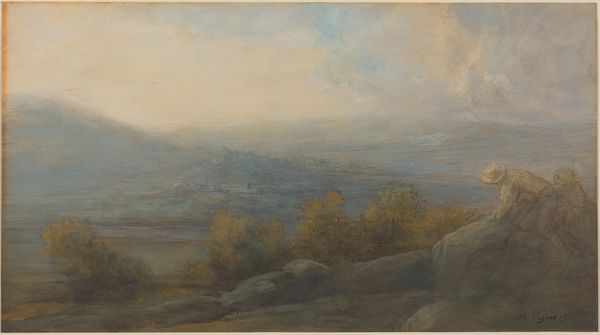
plein-air, oil-paint, watercolor
#
plein-air
#
oil-paint
#
landscape
#
oil painting
#
watercolor
#
romanticism
#
watercolour illustration
#
watercolor
Dimensions: height 505 mm, width 700 mm, height 76 , width 96 , depth 3
Copyright: Rijks Museum: Open Domain
Curator: This landscape fairly vibrates with feeling. Before us hangs "The Towered City (of: The Haunted Stream)," created between 1815 and 1881 by Samuel Palmer. It is a watercolor and oil-paint study. What are your initial thoughts? Editor: "Haunted" certainly is one word for it! It possesses a strangely melancholic quality; the dusky hues and the city perched atop that hill lend a sort of eerie fairytale vibe. The color palette is fascinating—the sunset feels both inviting and ominous. Curator: Yes, I agree; the sunset evokes duality. The symbols present tap into that deeply. Think of the city, its high perch granting dominion. It becomes a testament to permanence, even pride, against the "haunted stream" that implies temporality and flow, perhaps even danger. The contrast heightens a viewer’s awareness of the cyclical nature of existence. Editor: I see what you mean about permanence. I wonder how the social and political upheaval during Palmer's life influenced that need for visual stability. Remember the Romantic era, the early 19th century, with its complex attitudes toward industrialization and the pre-modern past! Did he intend for that tower to represent resistance to change? The choice of such an ancient artistic medium in oil paint itself reads as defiance, in my opinion. Curator: Indeed. There's the yearning, isn't there? It’s interesting to consider Romanticism’s fascination with medieval themes, especially when it concerns civilization facing wild nature. Palmer, having absorbed centuries of lore, then uses symbolic weight in his construction, perhaps intentionally so. The bridge acts as the intersection and perhaps the bridge through to it all? Editor: That emphasis on the intersection seems key here. And I note the positioning of figures too—they almost seem caught between worlds. Is this piece then intended to serve as an ideological beacon, signaling both society's past and its hoped-for future? Was this sort of art for public galleries or aristocratic estates? How do these considerations affect interpretation? Curator: Exactly, our understanding shifts based on where this hung, doesn’t it? Looking at Palmer’s work, the symbols prompt the contemplation of cycles: how societies shape themselves in reaction to an untamed, natural state that persists still. Editor: A cycle of perpetual conversation, painted skillfully into one evocative vista. Well, I see why "Haunted Stream" is part of the title, it leaves an impression!
Comments
No comments
Be the first to comment and join the conversation on the ultimate creative platform.
